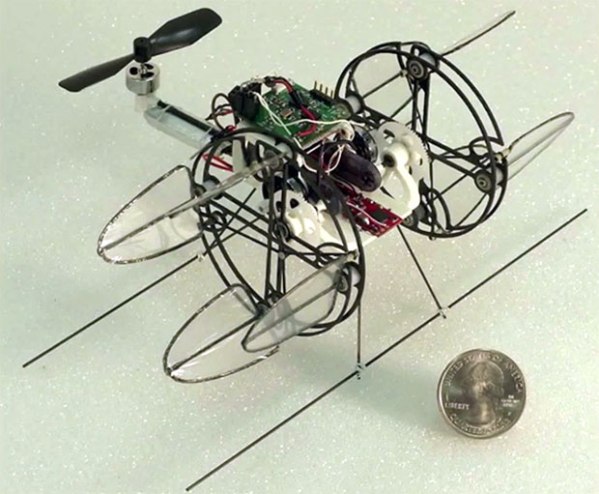For conventional vertical takeoff and landing rotors on vertical shafts are the most common solution, as seen in helicopters and multirotors. A much less popular solution is the cyclocopter, which consists of a pair of rotors spinning around a horizontal shaft with horizontal blades. [Nicholas Rehm] built a remote-controlled cyclocopter as part of a research project and gave us an excellent overview of this unique craft in the video after the break.
Also known as the cyclogyro, the idea is not new, with the first one constructed in 1909. The first flight was a long time later in the 1930s, but it was quickly discovered that they were too unstable to be flown manually by a human, so the idea was shelved. Thanks to modern microcontrollers, researchers have recently been able to build small-scale versions, like the tiny example from the University of Texas.
Lift is produced using four or more airfoils on each of the two cycloidal rotors. At the top and bottom of rotation they have a positive angle of attack, with a neutral angle on the sides. The blades’ angle of attack can be adjusted to produce forward or reverse thrust. An additional motor with a conventional propeller is mounted on the nose to counteract the torque created by the main rotors, similar to a helicopter’s tail rotor.
Unlike multirotors, cyclocopters don’t need to pitch forward to move horizontally. The blades also don’t need to be tapered and twisted like a conventional rotorcraft, since the relative airflow velocity remains constant along the length of the blade. However, they have some significant downsides that will likely prevent them from moving beyond the experimental stage for the foreseeable future. The rotors are quite complex mechanically and need to be very lightweight since the design doesn’t lend itself to great structural strength. This was demonstrated by [Nicholas] when a minor crash snapped one of the rotor arms. However, it is an excellent demonstration of the adaptability of [Nicholas]’ open-source dRehmFlight flight controller, which he has also used to fly a VTOL F-35 and belly-flopping starship.
Would you be surprised that this isn’t our first cyclocopter hack?
Continue reading “Cyclocopter Flies With Eight Spinning Horizontal Wings”












